Complete Solutions to Solved Problem of chapter ALCOHOLS AND ETHERS of Class 12 book with complete answers and questions
| Class 12 | CHEMISTRY |
| Chapter | ALCOHOLS AND ETHERS |
| MS CHOUHAN | Solved Problem |
| Number Of Questions | 78 |
| Academic Year | 2023-24 |
Give IUPAC substitutive names for the following alcohols:

View SolutionGive IUPAC substitutive names for the following alcohols:

View SolutionGive IUPAC substitutive names for the following alcohols:

View SolutionAlbuterol (used in some commonly prescribed respiratory medications) and vanillin (from vanilla beans) each contain several functional groups. Name the functional groups in albuterol and vanillin and, if appropriate for a given group. classify them as primary (`1^(@)`), secondary (`2^(@)`), or tertiary (`3^(@)`).

View SolutionWhat conditions would you use for each reaction?
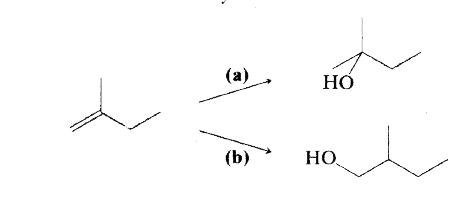
View SolutionTreating 3-methyl-2-butanol (see the following reaction) yields 2-bromo-2-methylbutane as the sole product. Propose a mechanism that explains the course of the reaction.
View SolutionGive the major product for the reaction
`CH_(3)-CH_(2)-underset(OH)underset(|)CH-CH_(3) overset(HBr)to `
View SolutionGive the major product for the reaction

View SolutionGive the major product for the reaction

View SolutionGive the major product for the reaction

View SolutionGive the major product for the reaction

View SolutionStarting with alcohol, outline a synthesis of
benzyl bromide
View SolutionStarting with alcohol, outline a synthesis of
cyclohexyl chloride
View SolutionStarting with alcohol, outline a synthesis of
butyl bromide
View SolutionSupply the missing reagents.

View SolutionThe cyclic ether tetrahydrofuran (THF) can be synthesized by treating 4-chloro-1-butanol with aqueous sodium hydroxide (see below). Propose a mechanism for this reaction.

View SolutionPrepare the ethers by Williamson.s ether synthesis
`CH_(3)-O-underset(CH_(3))underset(|)overset(CH_(3))overset(|)C-CH_(3)`
View SolutionPrepare the ethers by Williamson.s ether synthesis

View SolutionPrepare the ethers by Williamson.s ether synthesis

View SolutionExplain why methyl ethyl ether forms both methyliodide and ethyliodide on being heated with excess of HI?
View SolutionGive the major products obtained on heating the ether with one equivalent of HI.
`CH_(3)-overset(18)O-underset(CH_(3))underset(|)overset(CH_(3))overset(|)C-CH_(3)`
View SolutionGive the major products obtained on heating the ether with one equivalent of HI.
`CH_(3)-overset(18)O-CH_(2)-CH_(2)-CH_(3)`
View SolutionGive the major products obtained on heating the ether with one equivalent of HI.

View SolutionGive the major products obtained on heating the ether with one equivalent of HI.

View SolutionGive the major products obtained on heating the ether with one equivalent of HI.
`CH_(3)-CH_(2)-O-CH_(2)-Ph`
View SolutionGive the major products obtained on heating the ether with one equivalent of HI.
`CH_(3)-CH_(2)-O-CH_(2)-CH_(3)`
View SolutionSuggest reagents for the transformations
`CH_(3)Ito CH_(3)OH`
View SolutionSuggest reagents for the transformations
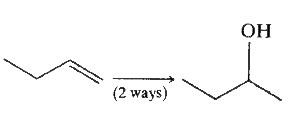
View SolutionSuggest reagents for the transformations

View SolutionSuggest reagents for the transformations

View SolutionChoose the best synthetic route to `(CH_(3))_(3)COCH_(3)` amongst the following:
(a) React `(CH_(3))_(3)COH` with KOH, then add `CH_(3)I` .
(b) React `(CH_(3))_(3)COH` with NaOH, then add `CH_(3)I`.
(c) React `CH_(3)OH` with KOH, then add `(CH_(3))_(3)CI.`
View SolutionGive the products of the reaction :

View SolutionGive the products of the reaction :

View SolutionGive the products of the reaction :

View SolutionGive the products of the reaction :

View SolutionGive the products of the reaction :
`"Product of reaction (d)" underset(DMF)overset(NaCN)to `
View SolutionGive the products of the reaction :

View SolutionGive the products of the reaction :

View SolutionGive the products of the reaction :

View SolutionGive the products of the reaction :

View SolutionGive the products of the reaction :

View SolutionGive the products of the reaction :

View SolutionGive the products of the reaction :

View SolutionGive the products of the reaction :

View SolutionWhy does ethylene oxide react readily with nucleophiles such as ammonia, whereas THF is inert to nucleophilic attack by ammonia?
View SolutionGive the products and mechanism for each of the following reactions. Explain why nucleophilic attack on the epoxide occurs at different sites in the two reactions.

View SolutionProvide the organic product(s) of the reaction. Pay careful attention to stereochemistry. If more than one product is formed, indicate which product (if any) is the major product. If no reaction occurs, write "NR"

View SolutionProvide the organic product(s) of the reaction. Pay careful attention to stereochemistry. If more than one product is formed, indicate which product (if any) is the major product. If no reaction occurs, write "NR"

View SolutionProvide the organic product(s) of the reaction. Pay careful attention to stereochemistry. If more than one product is formed, indicate which product (if any) is the major product. If no reaction occurs, write "NR"

View SolutionProvide the organic product(s) of the reaction. Pay careful attention to stereochemistry. If more than one product is formed, indicate which product (if any) is the major product. If no reaction occurs, write "NR"

View SolutionProvide the organic product(s) of the reaction. Pay careful attention to stereochemistry. If more than one product is formed, indicate which product (if any) is the major product. If no reaction occurs, write "NR"

View SolutionProvide the organic product(s) of the reaction. Pay careful attention to stereochemistry. If more than one product is formed, indicate which product (if any) is the major product. If no reaction occurs, write "NR"

View SolutionProvide the organic product(s) of the reaction. Pay careful attention to stereochemistry. If more than one product is formed, indicate which product (if any) is the major product. If no reaction occurs, write "NR"

View SolutionProvide the organic product(s) of the reaction. Pay careful attention to stereochemistry. If more than one product is formed, indicate which product (if any) is the major product. If no reaction occurs, write "NR"
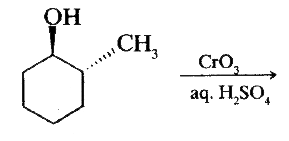
View SolutionProvide the organic product(s) of the reaction. Pay careful attention to stereochemistry. If more than one product is formed, indicate which product (if any) is the major product. If no reaction occurs, write "NR"

View SolutionProvide the organic product(s) of the reaction. Pay careful attention to stereochemistry. If more than one product is formed, indicate which product (if any) is the major product. If no reaction occurs, write "NR"

View SolutionProvide the organic product(s) of the reaction. Pay careful attention to stereochemistry. If more than one product is formed, indicate which product (if any) is the major product. If no reaction occurs, write "NR"

View SolutionProvide the organic product(s) of the reaction. Pay careful attention to stereochemistry. If more than one product is formed, indicate which product (if any) is the major product. If no reaction occurs, write "NR"

View SolutionProvide the organic product(s) of the reaction. Pay careful attention to stereochemistry. If more than one product is formed, indicate which product (if any) is the major product. If no reaction occurs, write "NR"

View SolutionProvide the organic product(s) of the reaction. Pay careful attention to stereochemistry. If more than one product is formed, indicate which product (if any) is the major product. If no reaction occurs, write "NR"

View SolutionProvide the organic product(s) of the reaction. Pay careful attention to stereochemistry. If more than one product is formed, indicate which product (if any) is the major product. If no reaction occurs, write "NR"

View SolutionProvide the organic product(s) of the reaction. Pay careful attention to stereochemistry. If more than one product is formed, indicate which product (if any) is the major product. If no reaction occurs, write "NR"

View SolutionProvide the organic product(s) of the reaction. Pay careful attention to stereochemistry. If more than one product is formed, indicate which product (if any) is the major product. If no reaction occurs, write "NR"

View SolutionProvide the organic product(s) of the reaction. Pay careful attention to stereochemistry. If more than one product is formed, indicate which product (if any) is the major product. If no reaction occurs, write "NR"

View SolutionProvide the organic product(s) of the reaction. Pay careful attention to stereochemistry. If more than one product is formed, indicate which product (if any) is the major product. If no reaction occurs, write "NR"

View SolutionConsider the reaction of
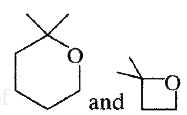 with aqueous HI.
with aqueous HI.
Give the mechanism and product of the faster reaction
View SolutionConsider the reaction of
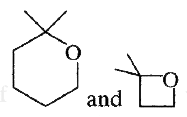 with aqueous HI.
with aqueous HI.
Explain your choice of the faster reaction.
View SolutionExplain why following reaction give different products :

View SolutionDefine oxidation and reduction from an organic perspective and give specific examples.
View SolutionWrite the best reagents above each reaction arrow. If the transformation cannot be achieved in a single step by any reagents, write "NR"

View SolutionWrite the best reagents above each reaction arrow. If the transformation cannot be achieved in a single step by any reagents, write "NR"

View SolutionWrite the best reagents above each reaction arrow. If the transformation cannot be achieved in a single step by any reagents, write "NR"

View SolutionConsider the reaction :

Provide a complete mechanism for the formation of the major product.
View SolutionConsider the reaction :

Briefly explain the choice of major product.
View SolutionBriefly explain why the following reaction does not occur

View SolutionGive the mechanisms of the reaction

View SolutionGive the mechanisms of the reaction

View SolutionWhich of the following two routes to allyl isopropyl ether is more efficient? Explain.

View Solution
Solved Problem questions and complete solutions for chapter ALCOHOLS AND ETHERS of MS CHOUHAN CHEMISTRY (HINGLISH) of Class 12
All Exercises from MS CHOUHAN Class 12 CHEMISTRY ALCOHOLS AND ETHERS
- ADDITIONAL OBJECTIVE QUESTIONS (Linked Comprehension Type ) Paragraph for Question 1 to 4
- ADDITIONAL OBJECTIVE QUESTIONS (Linked Comprehension Type ) Paragraph for Question 1 to 5
- ADDITIONAL OBJECTIVE QUESTIONS (Linked Comprehension Type ) Paragraph for Question 1 to 6
- ADDITIONAL OBJECTIVE QUESTIONS (Linked Comprehension Type ) Paragraph for Question 1 to 7
- ADDITIONAL OBJECTIVE QUESTIONS (Matrix Match Type )
- ADDITIONAL OBJECTIVE QUESTIONS (SINGLE CORRECT CHOICE TYPE)
- Solved Problem